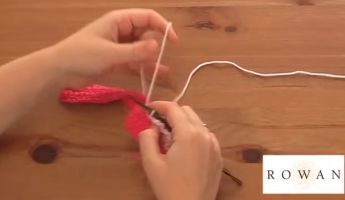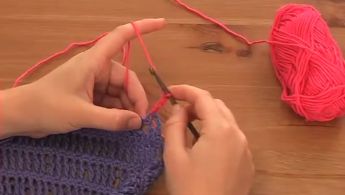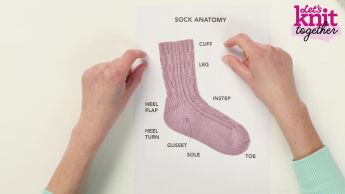How to: stuff toys
video by
Let's Knit Together
- Overview
- Practical Guides
There are a few handy ground rules for stuffing toys, so here is a run down of top tricks to get the perfect look and feel every time and common materials.
Toys come in all shapes and sizes, from long snakes to huggable cushions to cute dolls and animals. Where you have a big toy, you want to fill it in the most economical way, going from chunky foam on the inside to a finer filling nearest the surface for a smoother finish. The filling can be of various materials, and bear in mind the smaller the toy, the finer the stuffing you’ll probably need to use.
Toys are usually knitted fairly tightly to prevent stuffing from being visible or to be able to coming through the knitted fabric, and will recommend a needle size and yarn type, but unlike a garment the pattern may not specify an exact tension, as this less critical. With this in mind, check sure your knitting tension is suitable, and if it looks a little loose, go down to a smaller needle size, as even going from 4mm to 3.75mm will make a difference.
Here are some examples of useful fillings.
Foam is available in different densities and sizes, as offcuts, sheets or blocks.
It can cut as sheets or in blocks roughly to shape, and if you are doing this yourself you will need to take care while using a sharp knife or scissors. For a large item, it is a good idea to contain offcuts in fabric liner, such as an old pillowcase or pair of tights, and hide any lumpiness with sheets of foam or other smooth filling.
Wadding is soft and generally available in sheets or rolls, in different thicknesses, densities, and materials from cotton to wool or synthetics. It is handy for flatter items or part of an outer smoothing layer for larger items, and can be cut to shape quite precisely with sharp scissors.
Polystyrene or plastic beads are an option for floppy weighted toys, as dried beans or rice cannot be washed. Bearing in mind that the beads move easily, this filling is best contained in a sock, stocking or fabric liner so the beads can’t escape through the gaps in the knitting. Insert this type of filling with a plastic, card or paper funnel.
Fibre filling, also called toy safety filling, is made of synthetic fibres and is soft, malleable, hygienic, washable and non-allergenic. It can be
packed tightly for firmness or teased out to be very loose and is therefore probably the most versatile – and cuddly – choice.
TIP If you use a liner to contain the stuffing, make sure the end is sewn up to keep the filling at the right density, otherwise it can move around and potentially spoil the shape of your item – or the contents may even escape.
For most toys, fibre filling is the most common choice, and you can reuse clean old pillow stuffing for this too. Before you use fibre filling it is key to even out the texture and get rid of any lumps, so tease out the clumps a handful at a time to a similar density. A large amount can get packed down into quite a small item, and the more tightly packed it is the firmer it will feel.
Some limbs simply don't need stuffing, or may need only a little, if they are intended to hang rather than support the toy. When you get near to the top of a shape, usually a limb or tail hat will need to be attached, you may need to pack it less densely or even leave a gap of a centimetre or so to allow the limb to hang more loosely from the body. If, however, it is more of a supporting limb, you’ll want to stuff it firmly all the way to the top, possibly filing the last part as you join it. Where too much fibre filling has been inserted, a crochet hook is useful for pulling out excess stuffing, just take care not to snag the inside of the knitting.
How to stuff a ball shape
It helps if the shape is partially closed to hold the stuffing in. Start filling into the furthest point and build up the ball shape with similar amounts at a time. When you have filled the ball to the desirable firmness, close the main seam and ensure that both ends are also securely closed and fastened off, adding a couple of extra stitches if needed.
Stuff as you go
This technique may be recommended when knitting a long tube in the round, or an unusual shape shape that will be tricky to pad out later. Insert stuffing at regular intervals as the piece takes shape, making sure the item is filled evenly.
How to stuff a tube or odd shape
For more awkward or long items, you may need a tool to push the filling into certain areas, so try the blunt end of a crochet hook, knitting needle, pencil, wooden spoon or similar. Tease out the stuffing as usual and insert even amounts, pushing each one up to the last and making sure that any shapes are suitably filled.
Inclusions
If you want to add an inclusion, such as a squeaker or a bell, make sure that it sits firmly in the middle of the stuffing and can’t escape. Using a fabric liner adds an extra layer of security, as long as the end is sewn up. If you pattern includes a pipe cleaner or similar to make a limb more posable, make sure that the ends are bent over securely to avoid any possibility of sharp points coming through, and bear in mind the washing aspect too.











_268_268_64_c1.jpg)







































